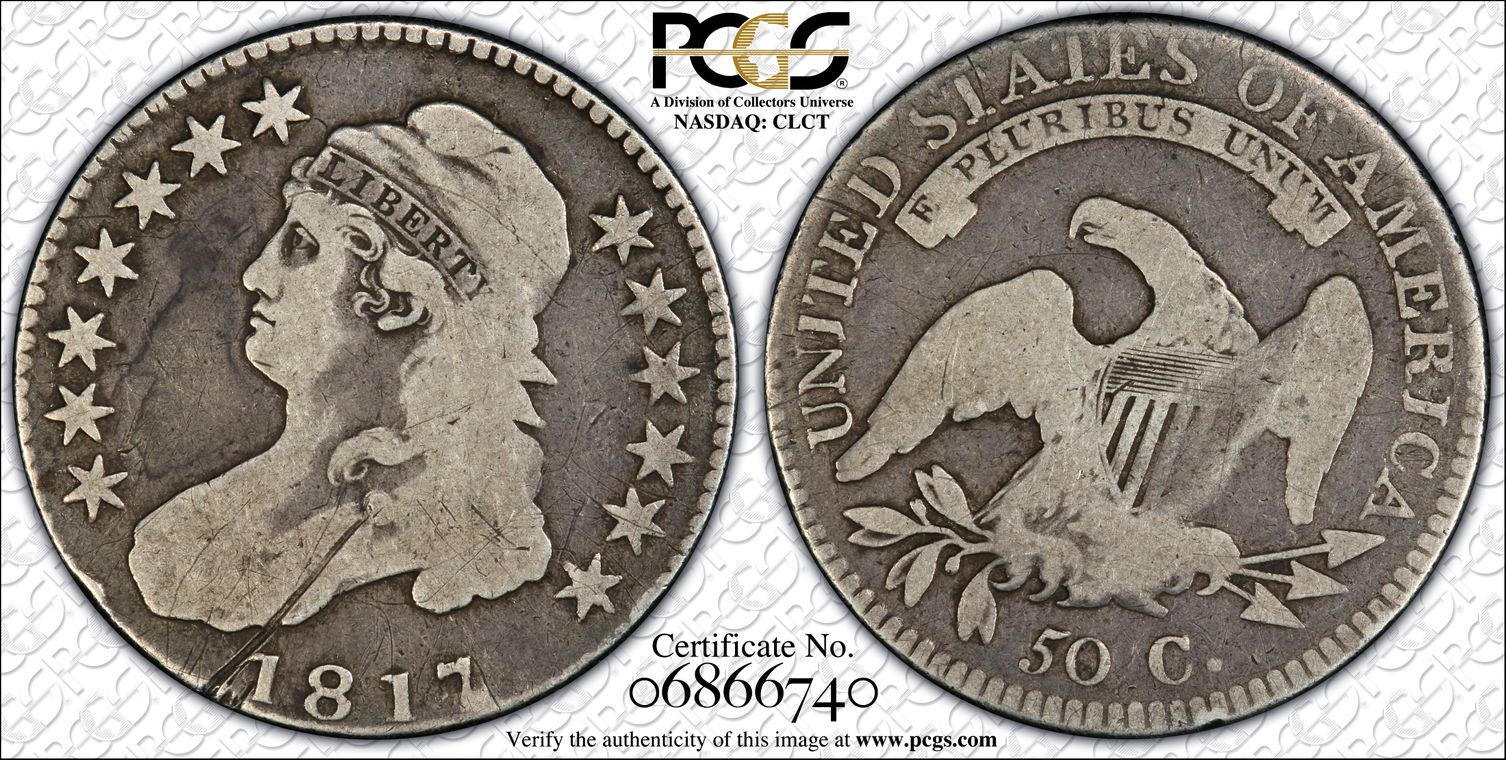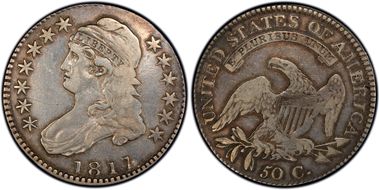1817/4 50C Overton 102 G6 认证号06866740, PCGS号39513
拥有者评论
专家评论
Ron Guth
Thanks to Bust Half Dollar expert Sheridan Downey for the following information:
In January 1816, John Reich was in his ninth year of service as Assistant Engraver for the United States Mint. Reich, from the time of his employment in September 1807, was regarded as one of the most skilled engravers in the country, having learned his trade in Germany before immigrating to the United States (as an indentured servant) in 1800. His talent certainly exceeded that of the Chief Engraver, Robert Scot. (Scot designed the earlier Flowing Hair and Draped Bust half-dollars.) Reich's first task, in 1807, was to redesign and prepare master dies and hubs for gold and silver coinage. The now familiar Capped Bust design is his enduring contribution to American numismatics. On the 10th of January 1816 the Mint delivered a token mintage of 47,150 half dollars for the year 1815. The entire mintage was coined from a single set of dies; the obverse die was prepared and date-punched in 1812, but had gone unused. In 1815 it was recovered, reworked and a '5' was punched over the partially effaced '2.' The overdating of unused dies was a common occurrence in the early years of the mint. In seven of the eleven years preceding 1816 the mint produced 'overdated' half-dollars. Hours after the delivery of the 1815/2 half dollars a fire in the Mint ruined its rolling mills. The rolling mills, of course, were needed to convert gold and silver bullion into strips from which planchets were prepared. Without planchets, no gold or silver coins could be struck in 1816.
One might suppose that Reich had plenty of time in 1816 to prepare working dies for 1817. Apparently not. The first two obverse dies used in 1817 were overdates. The 1817/3 came first, then the 1817/4. The two 1817 overdates share a common edge with the earlier 1814 O.103 and O.106, the 1815/2 and with the later struck 1817 O.110. (Remember, Overton's attribution numbers do not correspond with emission order.) Reich resigned in March 1817. His eyesight was failing and he was unhappy with the absence of a single pay raise during his 10-year employment. Scot immediately set to work 'fine tuning' the hub from which working dies were prepared. We readily notice his addition of curls to Liberty's coif, yielding a more elaborate and delicate hairstyle. Reich, we now know, prepared only one obverse die in 1817 - and it was not used until 1818. From the advent of the Capped Bust design in 1807 until he left the Mint in early 1817 Reich placed a covert 'signature' on the obverse dies prepared during his tenure: a small notch on the outside point of star 13. Of the 10 obverse dies used in 1817 only the 1817/3 and 1817/4 have this notch. (These dies, of course, had been prepared in 1813 and 1814.) The single obverse die used to coin the 1818/7 O.101 and O.103 also has the notch, along with large 8's and the early style hair curls."























